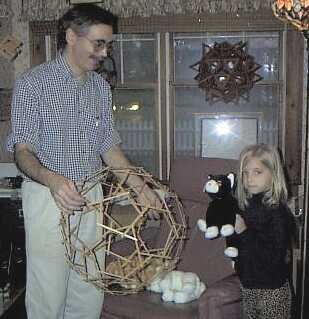| "This is a compound. Every polyhedron has a dual. They can be made to fit together nicely. An icosahedron and dodecahedron are dual to each other. This is a white icosahedron (20 triangles) intersecting a dark dodecahedron (12 pentagons)." |
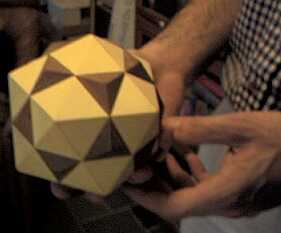 |
| See if you can follow the edges of the white pieces to find the large triangles and the edges of the dark pieces to find the large pentagons. Do you notice that there is a small dark triangle inside of each larger white triangle? And there is a small white pentagon inside of each larger dark pentagon. |
| "The dual of a tetrahedron is another tetrahedron. The sculpture on the left is a compound of two tetrahedrons intersecting each other." A tetrahedron has 4 triangular faces (sides).
|
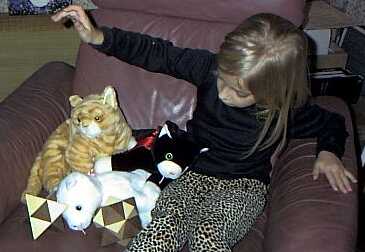 |
"The dual of a cube is an octahedron. On the right is a compound of a white cube and a dark octahedron."
A cube has 6 square faces; an octahedron has 8 triangular faces. |
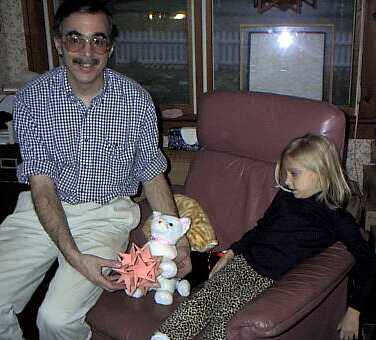 |
" This is a mathematical model made of paper. This one is called a stellation of the icosahedron. If you look at a big triangle here, there are actually 20 of those triangles, and on the inside of all the triangles there's an imaginary icosahedron in there. |
| So imagine expanding the faces until they hit each other. You can see pentagons, too, because an icosahedron has 5-way symmetry. Every vertex has five things around it. That fiveness shows up in the way the faces make these little swirly parts. There are about 59 stellations of the icosahedrons, and this is one of the more beautiful ones. Each piece is an irregular tetrahedron, a long stretched-out tetrahedron. There are 60 identical pieces in this, attached with Elmer's glue. There's a little tab on each one that slides in." George Hart's daughter Victoria joined us.
"He pretends he makes them all by himself, but... I help with little things, like holding something down, varnishing the book ball, holding pieces up so they don't all fall down. " |
George told us,
"This is Battered Moonlight. It was a lot of work to get it into that shape. There are lots of pieces of wire soldered together. Then it took a lot of sanding so that the flux wouldn't get into the finished model." Victoria added: |
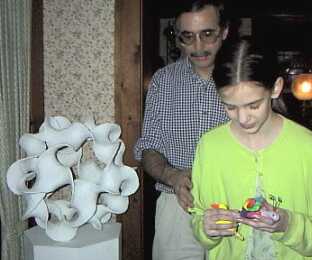 |
Don't you remember, I had been doing something with papier maché in school, so when Dad said, "I need something to cover this, maybe clay?"
I said, "Papier maché!" |
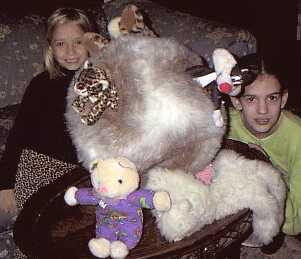 |
The Math Cats crawled into a furry sculpture. George told us, "I had spent a lot of time looking for fake fur, going to a variety of fabric stores and not finding any I liked. Then mentioning this to my mother, she said she had a few square yards of fake fur sitting in a plastic bag in the basement, and it was perfect."
|
| The Math Cats frolicked in a metal sculpture, too! |
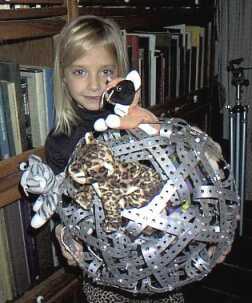 |
|


